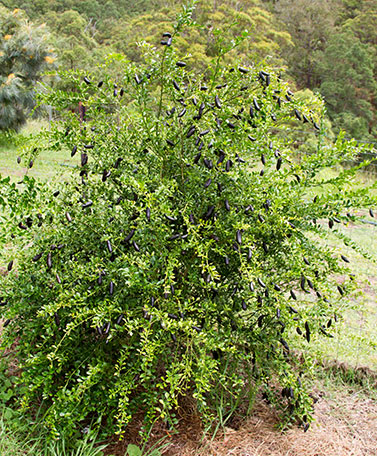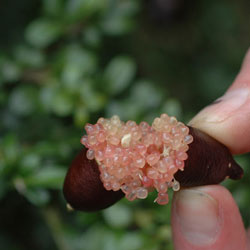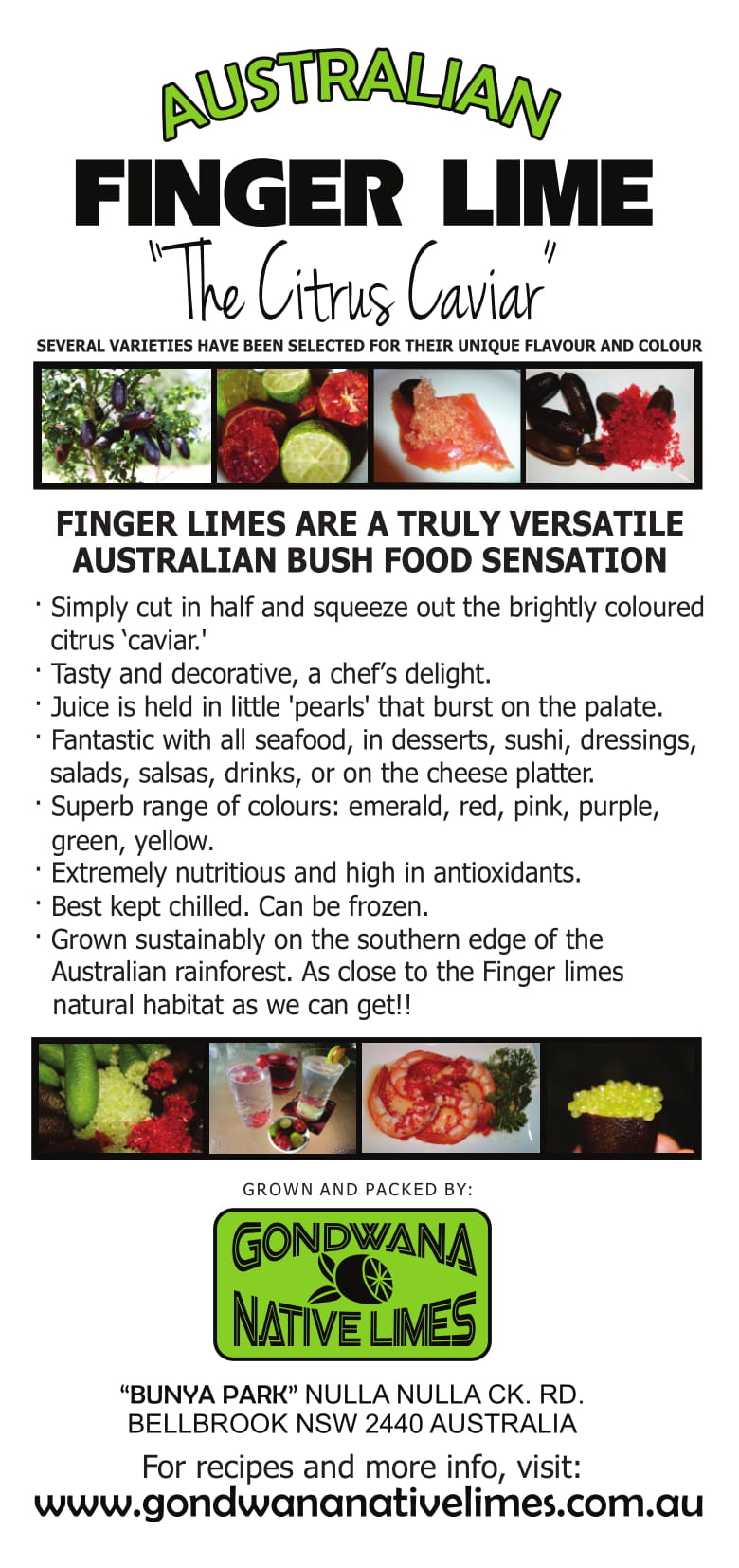 Citrus
australasica. Microcitrus australasica
Finger lime
Family: Rutaceae
Citrus
australasica. Microcitrus australasica
Finger lime
Family: Rutaceae
Australia has six species of native citrus, with the most well known and cultivated species being the finger lime.
Demand for finger limes has grown steadily over the past decade, mainly as a result of its bush food status, unique caviar-like pulp and attractive color range, with most interest coming from the restaurant trade.
PART USED: Fruit
PREPARATIONS
Fluid extract 1:1 35% alcohol.[1]



